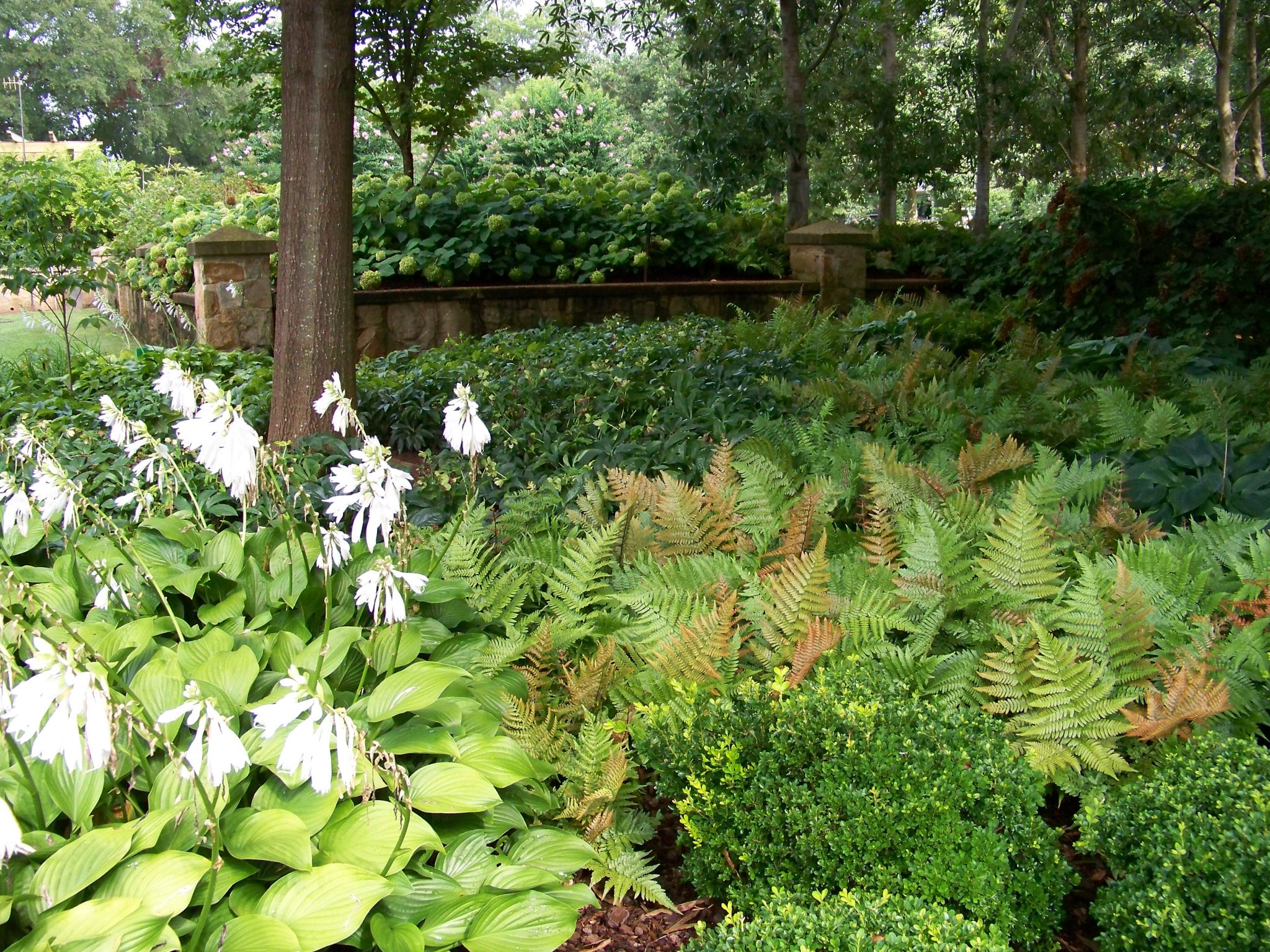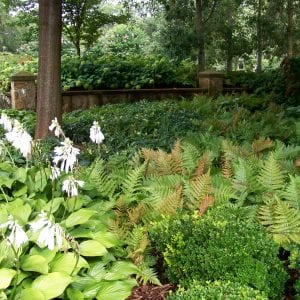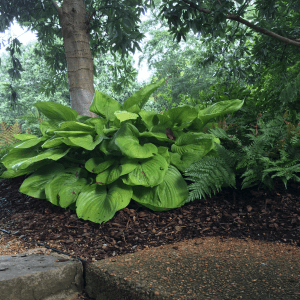Lawn & Garden

The best time to install perennials and perennial beds is the fall. The process of installing a new perennial bed or border takes eight steps.
Designing a Perennial Bed
The traditional way to display perennials in the landscape is to plant them in beds or borders in front of a backdrop of larger shrubs and trees. Planning a perennial bed can be easy of fairly complex. There are many approaches to developing beds and borders. Here are a few ways to incorporate perennials into your landscape:
- Plant for season-long color. Choose many different perennials with varying bloom times. This way, color will be present in the bed all season long.
- Create a season-themed perennial bed, such as a spring flowering bed or a summer flowering border.
- Create a color-themed border. Use one (monochromatic) or two (complementary) colors and the tints and shades of those colors.
- Base your perennial beds on a theme such as a butterfly or rock garden.
- Figure 1. Choosing perennial plants with varied textures makes for an attractive garden.
- Figure 2. Buy plants with healthy, white-tipped roots that reach the edge of the pot.
- Figure 3. Creating raised beds insures good drainage in the perennial garden.
When to Install Beds
Good timing is critical to success. The best time to install perennials and perennial beds is the fall. Newly planted perennials will have all winter for their root systems to become established before the heat of summer.
For North Alabama, plan to add perennials six weeks before the first hard freeze. In Central Alabama, plant in October, and in South Alabama, from September through November. Plan to prepare beds and let them sit for a month or two before planting. This will allow all the added nutrients to dissolve and the soil to settle.
Steps to Installing a Perennial Bed
The process for installing a new perennial bed or border is as follows:
- Develop a site plan. Use graph paper to lay out the planting design to scale. Include plants to be used as well as focal points and features. Research plants by looking for information, such as mature height and width, growth rate, and cultural requirements. Plants should be grouped in quantities of three, five, or seven, with taller plants in the back and shorter plants in the front. Repeat a few groupings of the same varieties throughout the bed to create a cohesive look.
- Soil test the bed site. Contact your local county Extension office for information on soil testing. Most perennials prefer a pH of 5.5 to 6.5.
- Remove ground covering in the area. This can be accomplished with an herbicide such as glyphosate or by digging up plants by hand or machine. Removal of turf is particularly important; grasses such as Bermudagrass will reliably return if not removed correctly.
- Till the area eight to ten inches deep, going first in one direction, then the other.
- Add four to six inches of organic matter, such as soil conditioner or compost, as well as any amendments and limestone suggested in the soil test. Till amendments into the soil.
- After the soil has rested, planting can begin. Choose plants with healthy root systems. Plants should have white-tipped roots and pots should have a good amount of roots, but not be pot-bound. If roots are wound around the edges of the pot, tease them out and open the root ball up before planting. Plant crowns at soil level or one inch higher than soil level.
- Add two inches of mulch to the planting bed, taking care not to mulch plant crowns or stems.
- Water deeply; after watering the soil should be wet four to six inches down. Newly planted perennials will need to be carefully monitored for watering needs.
Visit Alabama Extension’s website www.aces.edu for more information on perennials.
 Allyson Shabel, Urban Regional Extension Agent, Alabama A&M University. Original authors: J. Raymond Kessler and J. David Williams, Auburn University.
Allyson Shabel, Urban Regional Extension Agent, Alabama A&M University. Original authors: J. Raymond Kessler and J. David Williams, Auburn University.
Revised March 2023, Adding Perennial Beds to a Landscape, UNP-2178 revised from ANR-0566




